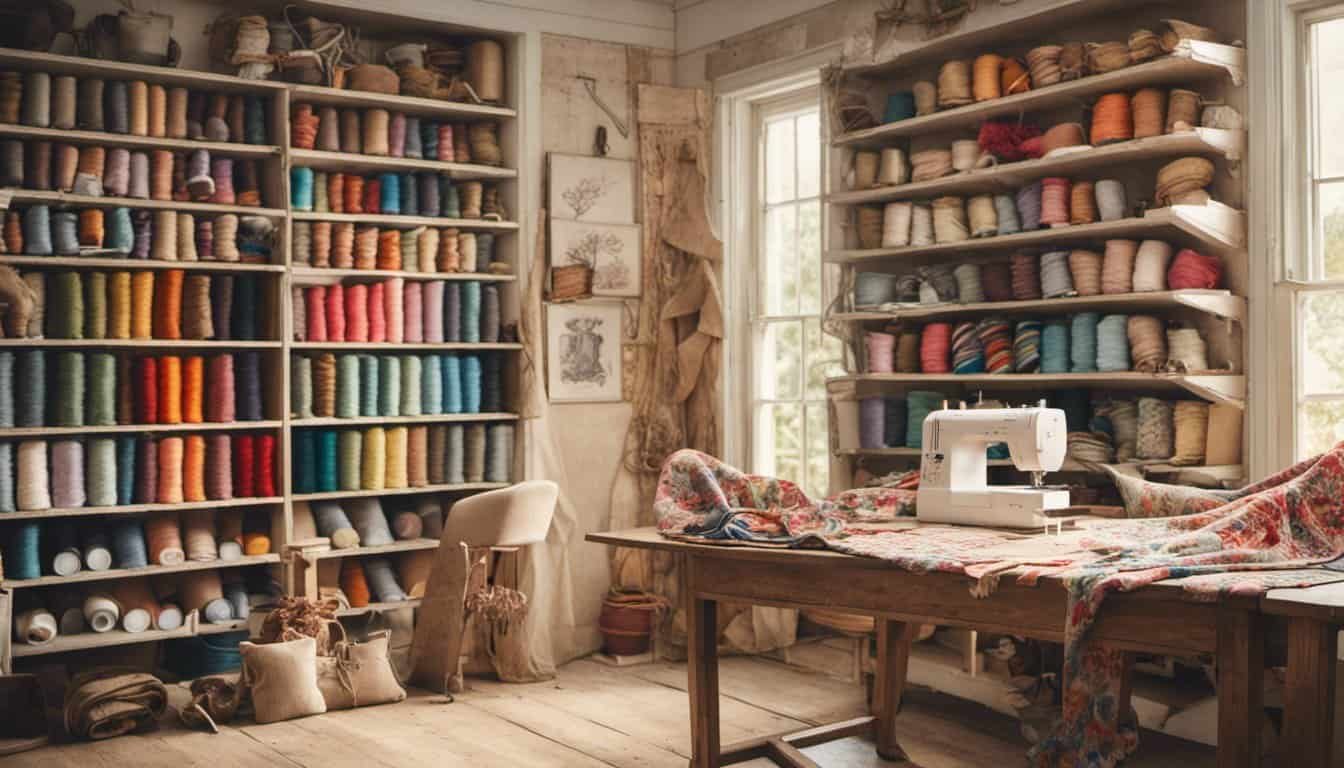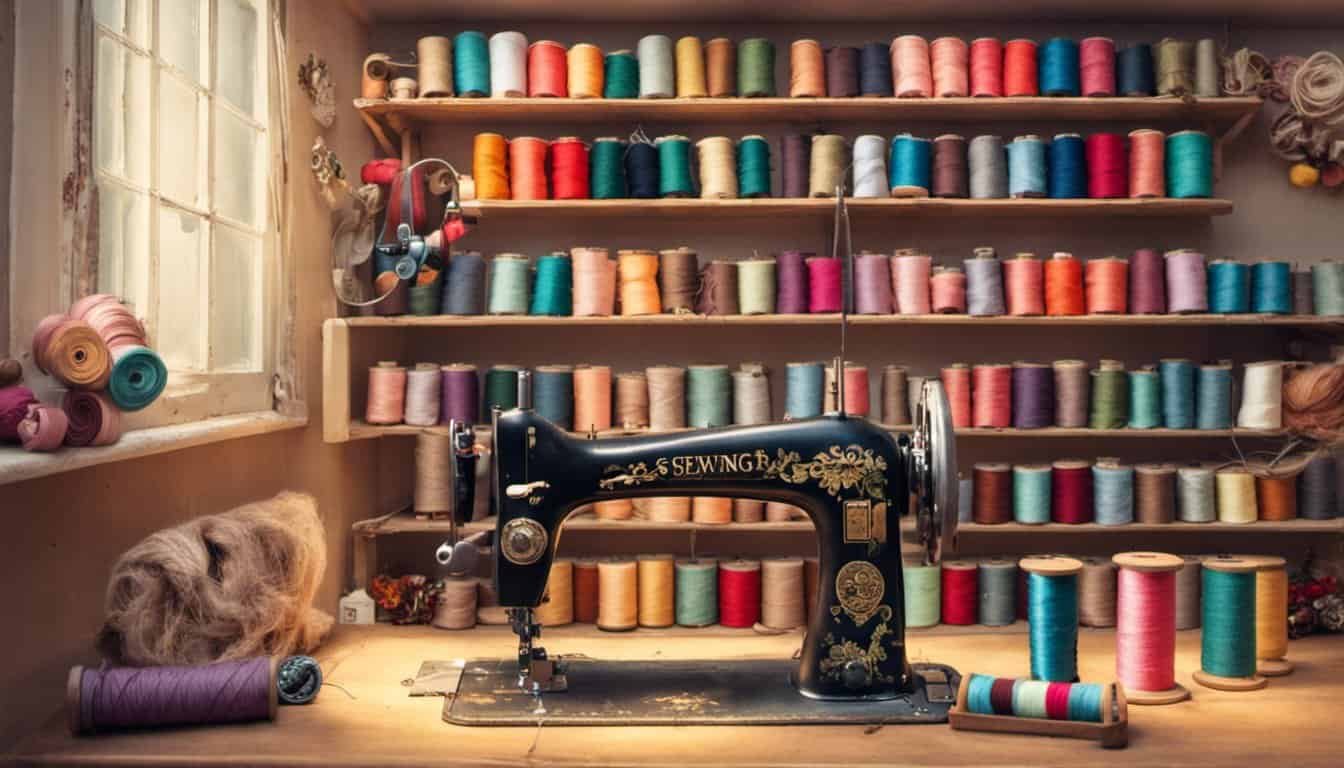Ever found yourself frustrated because your fabric keeps slipping while you’re trying to cut it? It’s a common challenge that many sewing enthusiasts face. But don’t let a slippery fabric derail your creative projects.
When fabric moves unexpectedly, it can lead to uneven cuts and wasted materials. Luckily, there are effective strategies you can use to keep your fabric in place. From using stabilizers and proper cutting techniques to selecting the right tools, you can maintain control and precision in your work.
In this article, you’ll explore practical tips and solutions to prevent fabric from slipping during cutting. With these insights, you’ll enhance your sewing experience and achieve the professional results you’re aiming for.
Common Causes Of Fabric Slipping
- Slippery Fabric Types: Fabrics like satin, silk, and certain synthetic blends have smooth surfaces that reduce grip, causing them to slide during cutting.
- Insufficient Stabilizers: Skipping stabilizers or using too little decreases fabric stability, making it easier for layers to move apart.
- Unsuitable Cutting Surface: Smooth surfaces such as glass or some plastic mats offer minimal friction, allowing fabric to slip beneath the cutting tool.
- Dull Cutting Tools: Blades that aren’t sharp create uneven edges, increasing resistance and causing fabric to shift while cutting.
- Improper Fabric Alignment: Misaligned fabric layers lead to uneven pressure during cutting, resulting in movement and inaccurate cuts.
- Excess Fabric Layers: Cutting too many layers at once adds bulk, making it harder to maintain even pressure and increasing the chance of slipping.
- Low Cutting Pressure: Applying minimal pressure when cutting doesn’t hold the fabric firmly, allowing it to slide under the blade.
- Environmental Conditions: High humidity can make fabrics more slippery by reducing friction between layers, while very dry conditions might make fabrics brittle and prone to shifting.
Preventative Measures To Avoid Slips
Preventing fabric from slipping during cutting ensures smooth and accurate results. Implement these strategies to keep your fabric steady.
Using Quality Cutting Mats
Investing in a high-quality cutting mat significantly reduces fabric movement.
- Choose mats with clear grid lines to guide your cuts precisely.
- Opt for self-healing surfaces that maintain sharp tool edges and minimize sticking.
- Select mats with non-slip backing to ensure stability on your workspace.
A superior cutting mat provides a reliable foundation, preventing slips and enhancing cutting efficiency.
Securing The Fabric Properly
Properly securing your fabric eliminates unwanted shifts while cutting.
- Use sharp pins or fabric clips to hold layers together evenly.
- Apply weights on lightweight fabrics to keep them flat and immobile.
- Employ tape for delicate materials that pins might damage.
Ensuring your fabric is firmly fixed in place reduces movement, leading to cleaner and more precise cuts.
Techniques To Correct Slips During Cutting
When fabric slips during cutting, immediate action maintains precision. Apply these techniques to keep your fabric steady.
Realigning The Fabric Seamlessly
Secure your fabric accurately to prevent misalignment.
- Pinning Strategically: Insert sharp pins perpendicular to the cutting line every 2 inches to hold fabric layers.
- Adjusting Fabric Tension: Ensure even tension across the fabric by stretching it gently before cutting.
- Repositioning the Cutting Mat: Flatten the mat and realign it to provide a stable surface for cutting.
Utilizing Adhesive Tools
Use adhesive tools to lock fabric layers in place effectively.
- Double-Sided Tape: Apply strips along the edges to keep fabric from shifting during cutting.
- Fabric Adhesive Spray: Lightly coat the fabric, allowing it to become tacky before making cuts.
- Cutting Weights: Place specialized weights on the fabric to maintain alignment without leaving residue.
Recommended Tools And Accessories
Equipping your workspace with the right tools can minimize fabric slippage during cutting. Here are essential tools and accessories to consider:
High-Quality Cutting Mat
Choose a cutting mat with clear grid lines, a self-healing surface, and a non-slip backing. These features enhance stability and ensure accurate measurements, reducing the chances of fabric movement.
Sharp Rotary Cutter
A sharp rotary cutter ensures smooth, clean cuts. Replace the blade regularly to maintain precision and prevent fabric from shifting due to resistance.

Fabric Weights
Use fabric weights to hold multiple layers in place. They keep fabric steady without causing damage, especially when working with slippery materials like satin or silk.
Fabric Clips
Opt for fabric clips instead of pins to secure fabric edges. Clips hold fabric tightly and minimize marks, providing a firmer grip to prevent slipping during cutting.
Stabilizers and Interfacing
Apply stabilizers or interfacing to slippery fabrics. These materials add rigidity and grip, making it easier to cut fabric accurately without movement.
Double-Sided Tape
Double-sided tape temporarily adheres fabric to the cutting mat. This method offers additional security, ensuring the fabric stays in place without leaving residue.
Self-Healing Cutting Surface
A self-healing cutting surface protects your fabric and preserves the sharpness of your cutting tools. It adjusts to cut smoothly, reducing the likelihood of fabric slippage.
Adjustable Cutting Press
« Never Skip Again: How to Fix a Skipped Zigzag Stitch Easily
Don’t Start Sewing Without This: How to Choose the Best Measuring Tape »
An adjustable cutting press applies consistent pressure across your fabric layers. This uniform pressure keeps fabric steady, enhancing cutting precision and minimizing movement.
Magnetic Cutting Mat
Magnetic cutting mats offer enhanced stability by securely holding the mat in place. The magnetic backing prevents the mat from shifting, providing a reliable surface for cutting.
LED Cutting Lights
Proper lighting improves visibility and precision. LED cutting lights illuminate your workspace, allowing you to see fabric edges clearly and reduce mistakes caused by fabric movement.
Implementing these tools and accessories in your sewing workflow can significantly reduce fabric slippage, ensuring smoother cutting experiences and more professional results.
Best Practices For Accurate Cutting
Ensuring precise cuts starts with selecting the appropriate tools and techniques. Follow these best practices to enhance your cutting accuracy:

- Select a Quality Cutting Mat
A reliable cutting mat provides a stable surface. Choose one with clear grid lines, self-healing properties, and a non-slip backing to prevent movement during cutting.
- Use Sharp Cutting Tools
Keep your rotary cutters, scissors, and blades sharp. Dull tools cause uneven edges and require increased pressure, which can lead to fabric slippage.
- Stabilize Your Fabric
Apply stabilizers or interfacing to slippery fabrics. Stabilizers add weight and reduce movement, ensuring your fabric stays in place while cutting.
- Align Fabric Properly
Position your fabric with edges flush against the cutting mat. Use rulers or guides to maintain straight lines and consistent measurements.
- Control Cutting Pressure
Apply even pressure when cutting. Uneven pressure can cause fabric layers to shift, resulting in inaccurate cuts.

- Manage Fabric Layers
Limit the number of fabric layers you cut at once. Cutting too many layers increases the risk of slipping and imprecise edges.
- Maintain Optimal Workspace Conditions
Keep your workspace dry and free from excessive humidity. High humidity can make fabrics more slippery, while a clean, flat surface enhances cutting accuracy.
- Secure Fabric with Pins or Clips
Use sharp pins or fabric clips to hold your fabric securely. Properly securing your fabric minimizes movement and maintains alignment during cutting.
By implementing these best practices, you’ll achieve more accurate cuts, reduce material waste, and enhance the overall quality of your sewing projects.
Conclusion
Cutting slippery fabric doesn’t have to hold you back. With the right tools and techniques you can keep your projects on track. Secure your fabric well and choose a stable cutting mat. Using weights or clips helps keep everything in place. If a slip does occur stay calm and adjust your approach to maintain precision.

These strategies will reduce frustration and improve the quality of your sewing. Each project becomes smoother when you know how to handle tricky fabrics. Keep practicing these methods to build your confidence and skill. Happy sewing!






![Public Speaking [5-in-1]: 91 Techniques & Hacks to Boost Your](https://m.media-amazon.com/images/I/41pTaCAx1iL._SL500_.jpg)










